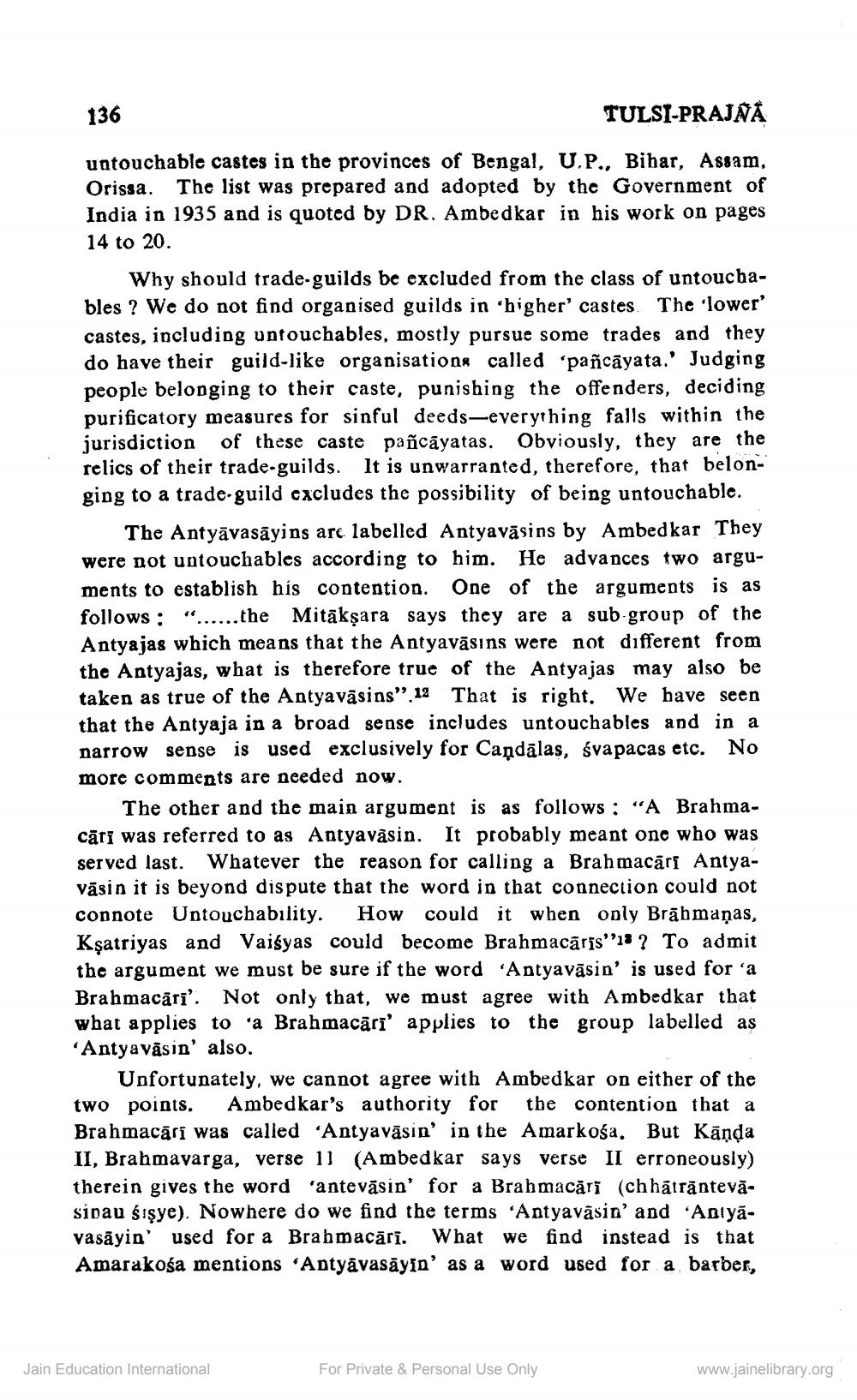________________
136
TULSI-PRAJNA
untouchable castes in the provinces of Bengal, U.P., Bihar, Assam, Orissa. The list was prepared and adopted by the Government of India in 1935 and is quoted by DR. Ambedkar in his work on pages 14 to 20.
Why should trade-guilds be excluded from the class of untouchables? We do not find organised guilds in higher' castes The 'lower' castes, including untouchables, mostly pursue some trades and they do have their guild-like organisations called 'pañcāyata.' Judging people belonging to their caste, punishing the offenders, deciding purificatory measures for sinful deeds-everything falls within the jurisdiction of these caste pañcāyatas. Obviously, they are the relics of their trade-guilds. It is unwarranted, therefore, that belonging to a trade-guild cxcludes the possibility of being untouchable.
The Antyāvasāyins are labelled Antyavāsins by Ambedkar They were not untouchables according to him. He advances two arguments to establish his contention. One of the arguments is as follows: "......the Mitākṣara says they are a sub-group of the Antyajas which means that the Antyavāsins were not different from the Antyajas, what is therefore true of the Antyajas may also be taken as true of the Antyavāsias". 12 That is right. We have seen that the Antyaja in a broad sease includes untouchables and in a narrow sense is used exclusively for Candālas, sva pacas etc. No more comments are needed now.
The other and the main argument is as follows: "A Brahmacāti was referred to as Antyavásin. It probably meant one who was served last. Whatever the reason for calling a Brahmacārī Antyavāsin it is beyond dispute that the word in that connection could not connote Untouchability. How could it when only Brāhmaṇas, Ksatriyas and Vaisyas could become Brahmacäris''18 ? To admit the argument we must be sure if the word 'Antyavāsin' is used for 'a Brahmacāri'. Not only that, we must agree with Ambedkar that what applies to 'a Brahmacāri' applies to the group labelled as ‘Antyavāsin' also.
Unfortunately, we cannot agree with Ambedkar on either of the two points. Ambedkar's authority for the contention that a Brahmacāli was called 'Antyavāsin' in the Amarkośa. But Kända II, Brahmavarga, verse 11 (Ambedkar says verse II erroneously) therein gives the word 'antevāsin' for a Brahmacāri (chhātrāntevāsinau šişye). Nowhere do we find the terms 'Antyavasin' and 'Aniyavasāyin' used for a Brahmacāri. What we find instead is that Amarakośa mentions .Antyavasayin' as a word used for a barber,
Jain Education International
For Private & Personal Use Only
www.jainelibrary.org




